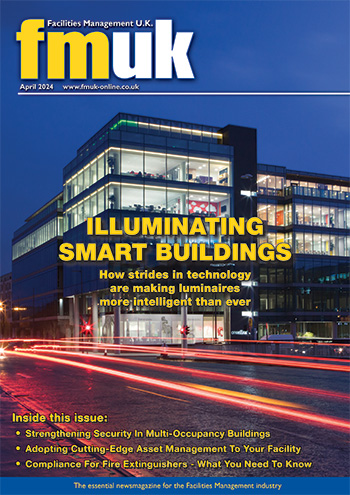technologywithin Webinar: Maximising the Profitability of City‑Based Portfolios
By Richard Morris, Director at technologywithin.

Workspace technology provider technologywithin recently held a webinar on how landlords can maximise the profitability of their city-based portfolios, with technologywithin’s Richard Morris hosting property and proptech experts Rory Young (Wiredscore), Will Kinnear (HEWN), and Derrick Dickinson (Rio Designs).
Amongst the topics discussed were the learning curve of COVID-19, the proliferation of ‘smart’ buildings, and the continued growth of ‘space as a service’. Plus, the evolution of office design, and how a future with 5G might look.
Richard: What have landlords learned from their experience of the pandemic so far?
Will Kinnear: I have found that clients have voiced their appreciation for a more open dialogue with tenants, which facilitates greater transparency as tenancy agreements come under stress in these uncertain times. Landlords recognise that many tenants have a genuine inability to make their usual payments and are therefore working together with them on new payment plans, helping both sides weather the storm more easily.
The pandemic has also underlined the important part that technology plays in tenant satisfaction, which was already rising up the agenda before COVID-19. Landlords are right to ensure their space is sufficiently equipped to enable tenants to move in quickly, which is key in this competitive market. Landlords all over the UK are embracing tech, so the possibilities for the post-pandemic CRE sector are very exciting.
Richard: Is the premium placed on “smart” builds increasingly spreading out from London to other regions?
Rory Young: Whether you are an occupier in London or in Leeds you want to be working in a space which can firstly support your technology requirements and secondly is an inspiring space to work within. No matter which location you are in, a poor digital experience in a building is universally damaging to your productivity and so occupiers will always place a higher premium on buildings which can assure them that they can deliver this experience. The shift to working from home has put an even greater emphasis on this occupier requirement for buildings to deliver a great digital experience, as we are seeing a real flight to quality in the office sector. In a world where employees can choose to work from home or go into the office, the office has to deliver an experience which you otherwise cannot achieve whilst working from home and smart building technologies underpinned by a resilient digital infrastructure will play a key role in this.
Richard: What is driving the growing popularity of joint ventures between landlords and operators?
Will Kinnear: A key reason for this growth is the continued development of ‘space as a service’. This is something that has been happening for a while now, so it’s really important for landlords to catch on if they haven’t already.
It is not necessarily enough to just provide empty space for tenants, but neither should landlords fit out space with just any product and expect that tenants will come. Landlords need to understand that tenant demand has been changing for some time and that this has been accelerated in light of the pandemic. Importantly, tenants want flexibility for when their business grows and, more often, experience, which is why we’re seeing buildings that house flexible workspace space, space as a service, and traditional office space attracting businesses on both shorter- and longer-term leases.
Tenants also want everything they need to run their business, from furniture to broadband, built-in from day one. They’re happy to pay for the convenience as it allows them to budget moving forward and to concentrate on running their business. More and more, we are seeing landlords take care of this list of “chores”.
But landlords don’t necessarily want to or know how to do this either, which is where joint ventures come in. By partnering with experienced operators, landlords can share the risk of the venture in return for a share of the profit. It’s vital, however, that landlords choose their partners carefully, as different operators will have experience with properties of different sizes, locations, and so on.
Richard: What changes can we expect in how flexible office space is designed in the wake of the pandemic?
Derrick Dickinson: Tenants are naturally concerned about safety at the moment, wanting more self-contained offerings with their own meeting rooms and breakout areas. In theory, this means offices will struggle to squeeze enough desks into the remaining space, but in practice this isn’t the case. First of all, safety concerns mean many people are currently working from home, and this practice is likely to continue in some form even after the pandemic.
Furthermore, as technology has become increasingly important in the office, the average space occupied by each worker has shrunk dramatically. 20 years ago, for example, when everyone needed a filing cabinet and a large desk because of all the paperwork, each workstation filled 100 or 120 square feet. Now, with many offices going paperless, workers only need a relatively small desk, which equates to about 50 square feet per person. That’s a big saving, even when traded off against the 10 or 15 square feet needed for the new breakout area. Tech frees up space, giving workspace providers room for manoeuvre in adapting their offerings.
Richard: How will 5G impact the need for fibre connectivity?
Rory Young: There will never be a scenario where we will not use fibre as a method for delivering our connectivity, however the future of connectivity likely involves businesses using a combination of fibre, 5G and a fixed wireless solution for their internet provision. With this in mind, it is crucial that landlords today are thinking about how their buildings infrastructure can hold up to providing connectivity across multiple avenues in order to avoid becoming technically obsolete and damaging investment values.
Looking at 5G specifically, the built environment is going to really struggle as 5G becomes more commercially available due to its inability to travel as far as 4G mobile signal due it operating at a much higher frequency and therefore being more readily interrupted by building materials. Owners need to understand today whether their building is going to struggle with 5G and if so what strategies they can put in place today to ensure their portfolio can keep up with occupiers evolving technology requirements and ultimately secure income streams.






















































